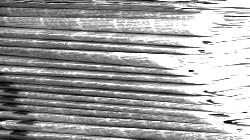Online Newsrooms Save the Media
Time and Frustration
by Marcia Yudkin
In 2000, when web site
usability guru Jakob Nielsen tested how well
major corporate sites met the needs of reporters, he gave them a "D" grade.
Journalists who visited sites for him located
basic information such as the companies'
financials, management team, commitment to
social responsibility and a phone number for a
PR contact only 60 percent of the time.
Online newsrooms
have improved a bit in the intervening time, but
they still fall short. In a 2009 survey of
journalists by TEKgroup International, 43% said
it was difficult to find a company's newsroom,
and more than half said it was hard to find the
name of the company's media contact and how to
reach him or her.
By providing media-friendly
materials on demand 24 hours a day, 365 days a
year, you increase the odds of someone writing
about you, using photos you've supplied and
doing so with accuracy. Follow these best
practices to make sure the process meshes with
the needs of journalists.
Be Findable
Media people
often start their hunt for a particular
company's newsroom at its home page. So
the best way to help them find it is to have a
major navigation link called simply
"News," "Press" or
"Media." Second best is to offer
the information the media need in the
"About the Company" section of the web
site.
Either way, when
you include obvious signage in the structure of
the web site, people can head there quickly from
any page of the web site.
|
Improve Your Odds for Media Coverage
Discover how to generate dozens of ideas that reporters, broadcasters - and your prospective customers - love. Inject dynamism, relevance
and surprise into your media pitches.
Learn how to distill your message so it captures attention right away, then bolster your credibility and eliminate factors that turn off editors and producers.
Publicity success course. |

Publicity success course |
|
Components of Your Newsroom
Your online newsroom should
contain, at a bare minimum:
- An organizational profile, including
company history
- Names and bios of principals and
executives of your organization
- A PR contact with name, email address and
telephone number
- Press releases, presented with the most
recent first
- Downloadable photos of products and key
personnel
Optional extras for your newsroom include:
- Online versions of recent annual reports,
case studies and white papers
- Statements about relevant controversial
issues currently in the news
- Suggested angles for feature stories
including your organization
- Sample questions for talk show hosts
- Links to pertinent studies, statistics and
news stories
- Links to previous coverage you've enjoyed
- Prewritten use-as-is stories or tips
- Audio or video clips
- Social media options - links to your blogs,
Twitter feeds, Facebook page, etc.
- Event calendar
- Opportunity to sign up for RSS feeds and
breaking news alerts
Online Newsroom Best Practices
The more
lively the style in which all of the above comes
across, the more likely you are to get
journalists passing through to stay awhile and
start thinking about how they can use what
you've provided. Corporate-speak may please
internal bosses, but it gets in the way here and
may even provide fodder for the many sites that
make fun of pretentious marketing blather.
Provide as much
of the written material as possible in HTML
format, rather than in PDF documents.
Because one cannot cut and paste names and
quotes from PDFs, media people regard companies
providing publicity material in that form as
clueless.
Keep in mind
that on the web, media from all over the world
and from outside of your industry can access
your press room, so avoid acronyms and insert
the kinds of background explanations that would
be found in a quality news story. Dates are
especially important to present unambiguously.
Jakob Nielsen reported a case where a European
reporter dismissed a company's news as old
because it was dated 10-3-2000, which to him
meant March 10 rather than the intended October
3.
Do not require
journalists to register to gain access to your
newsroom. That sends the message that you're
disinclined to be helpful to the
media.
Another red flag
to the media is a web contact form rather than
names, email addresses and telephone numbers for
a company's media contact people. The form
signals "maybe we'll get back to you in two
weeks," which doesn't work for reporters or
fact checkers on deadline, while the detailed
contact information conveys readiness to respond
right away.
Copyright 2010
Marcia Yudkin. All rights reserved.
Online Courses Related to Publicity
The Press Release Makeover Course
Deep Publicity
Marketing for Introverts
Create a Practical Marketing and Publicity Plan |







